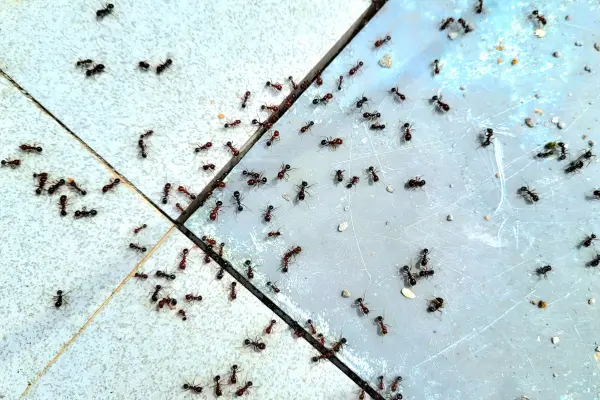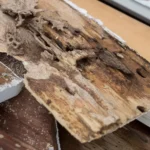
As spring temperatures get warmer, carpenter ants become more active in their search for food and nesting sites. Unlike typical household ants, these wood-boring insects carve tunnels through timber, which may gradually weaken your home’s structure. If you’re seeing large ants indoors, particularly ones with wings, it could mean it’s time for a professional assessment.
Wondering if the ants in your home are carpenter ants? Our guide will help you recognize their characteristics and habits.
Why Carpenter Ants Are More Active in Spring
As the weather becomes more welcoming, carpenter ants go on longer ventures to find food and moisture. Spring rain and melting snow create damp wood, which both make it easier for them to establish nests.
One of their most recognizable seasonal behaviors is the nuptial flight. During this event, winged reproductive ants, known as alates, begin their flight to start new colonies. If you notice swarming ants around your property, it could be a sign that a nearby colony is expanding.
How to Identify Carpenter Ants
Here are some distinct traits to look for:
Large size (1/4 to 3/4 inch).
Dark coloration, often black.
Presence of winged alates during mating flights.
For further identification tips, visit our Carpenter Ant Pest ID guide.
Signs That Carpenter Ants Could Be Nesting Nearby
Carpenter ants remain active throughout the year, but their presence becomes more obvious in spring. Watch for these warning signs:
- More frequent ant sightings along exterior walls and around building foundations
- Small piles of sawdust-like debris near moist or rotting wood
- Clusters of ants around logs, tree stumps, or stacked firewood
How to Lower the Risk of a Carpenter Ant Infestation
As you now know, spring’s warmth and moisture create the perfect conditions for carpenter ants to thrive. Taking preventative steps now can help reduce the likelihood of an infestation. Here’s what you can do:
- Fix moisture issues by repairing leaks, improving ventilation, and ensuring gutters direct water away from your home to keep wood dry.
- Keep firewood elevated and stored away from your home to make it less appealing for nesting.
- Seal cracks and openings around doors, windows, and your foundation to block potential entry points.
When It’s Time to Call a Professional
Have you spotted carpenter ants or signs of their activity? Addressing the issue early can help protect your home from costly damage. These colonies expand quickly in spring, but early professional treatment can stop them from spreading. Take a moment to visit our ant services page where you can explore treatment options and schedule an inspection.
Carpenter Ant Resources
Bug Out is here to help homeowners stay ahead of carpenter ant infestations. Taking action now can help keep these wood-damaging pests under control. Contact us for a free inspection, and use this checklist to keep your home ant-free.
Spring Maintenance Checklist:
- Seal cracks and gaps around your home’s foundation
- Inspect for damp or rotting wood
- Trim trees and shrubs to prevent contact with your home
- Ensure proper drainage to keep water from pooling near your foundation
- Schedule a professional inspection
Schedule a Spring Carpenter Ant Inspection Today!





